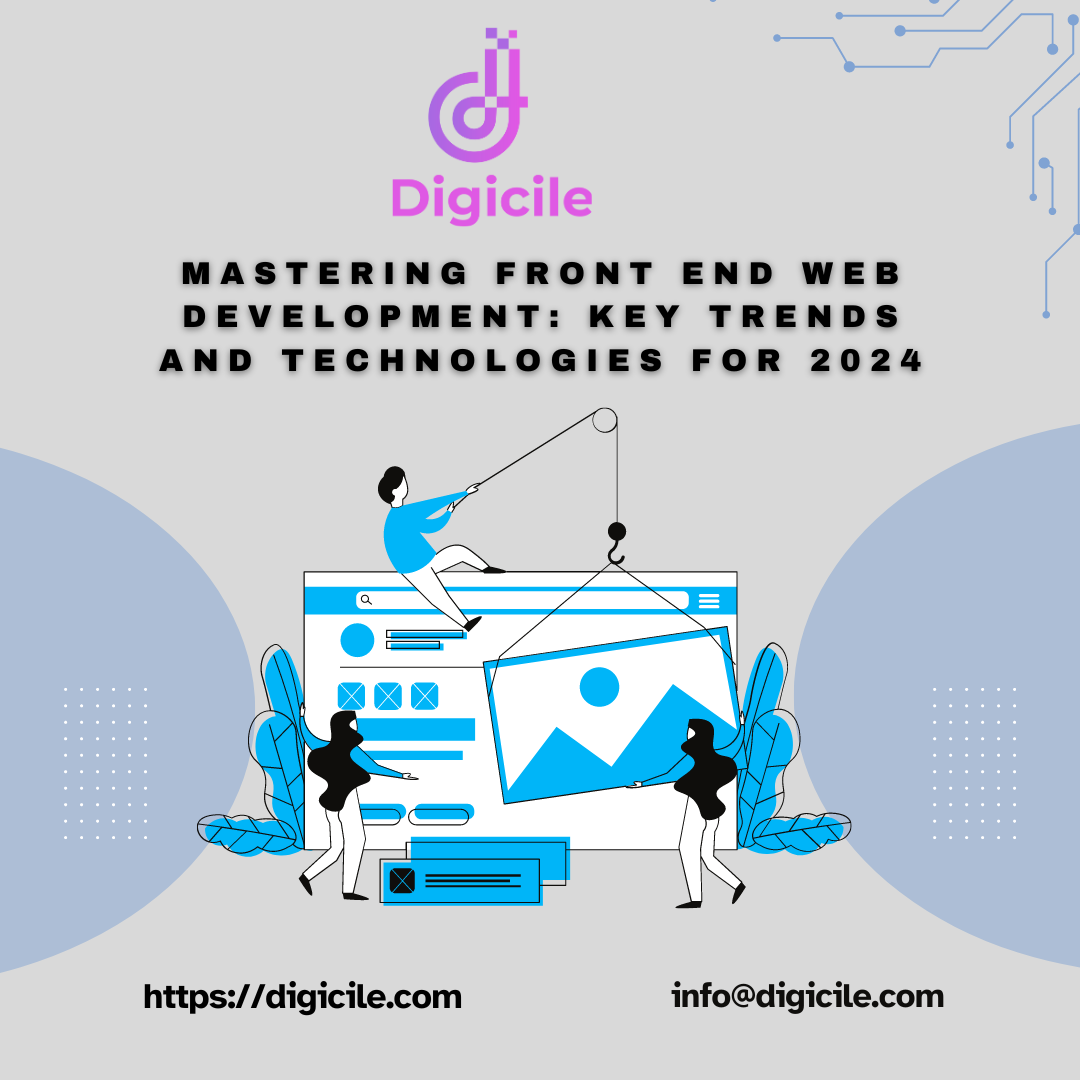Front end web dev is a dynamic and rapidly evolving field. As we step into 2024, staying ahead of the curve requires an understanding of the latest trends and technologies that are shaping the industry. Here’s a comprehensive guide to mastering front-end web development by exploring the key trends and technologies for 2024.
1. React 18
React, a popular JavaScript library for building user interfaces, continues to lead the front-end development space. React 18 introduces several new features:
- Concurrent Rendering: Improves responsiveness by allowing React to prepare multiple versions of the UI simultaneously.
- Automatic Batching: Enhances performance by reducing the number of renders during state updates.
- Suspense for Data Fetching: Simplifies data fetching in React components, making asynchronous operations easier to manage.
2. Angular 13
Angular remains a strong contender for building complex, large-scale applications. The latest version, Angular 13, offers:
- Enhanced Performance: Improvements to the Ivy compiler and runtime result in faster build times and smaller bundle sizes.
- Dynamic Component Creation: Simplified APIs for creating dynamic components.
- Updated TypeScript Support: Compatibility with TypeScript 4.5, offering better type-checking and error reporting.
3. Vue.js 3
Vue.js continues to be favored for its simplicity and flexibility. Vue 3 brings:
- Composition API: Provides a more flexible way to organize component logic, making code more modular and reusable.
- Improved Performance: Faster rendering and better memory usage through optimizations.
- Tree-Shaking: Reduces bundle size by eliminating unused code.
4. SvelteKit
SvelteKit is revolutionizing front-end development by compiling components at build time, resulting in highly efficient applications. Key features include:
- Server-Side Rendering (SSR): Enhances performance and SEO.
- File-Based Routing: Simplifies the creation of routes in applications.
- Static Site Generation (SSG): Enables developers to generate static websites easily.
5. Tailwind CSS
Tailwind CSS is a utility-first CSS framework that is rapidly gaining popularity. Its key advantages are:
- Utility-First Approach: Provides utility classes for styling elements directly in the markup.
- Customization: Highly configurable to fit any design system.
- Responsive Design: Built-in utilities for creating responsive layouts.
6. WebAssembly (Wasm)
WebAssembly allows code written in multiple languages to run on the web with near-native performance. Its benefits include:
- High Performance: Executes code directly in the browser, offering significant performance improvements.
- Language Flexibility: Supports multiple programming languages, not just JavaScript.
- Interoperability: Can work alongside JavaScript, leveraging existing web technologies.
7. Next.js
Next.js is a powerful framework for building React applications with server-side rendering. Its features include:
- Static Site Generation (SSG) and Server-Side Rendering (SSR): Provides performance and SEO benefits.
- API Routes: Simplifies the creation of backend functionality within the same project.
- Incremental Static Regeneration (ISR): Allows pages to be updated incrementally after deployment.
8. Jamstack Architecture
Jamstack (JavaScript, APIs, and Markup) is a modern architecture for building fast and secure websites. Key components include:
- Headless CMS: Decouples content management from front-end presentation, offering flexibility and scalability.
- Static Site Generators: Tools like Gatsby, Hugo, and Jekyll help generate static sites from dynamic sources.
- Serverless Functions: Provides scalable backend functionality without managing server infrastructure.
Key Trends in Front End Development
1. Enhanced User Experience (UX)
Focus on delivering seamless and intuitive user experiences is paramount. This involves:
- Performance Optimization: Faster load times and smooth interactions.
- Accessibility: Ensuring applications are usable by everyone, including those with disabilities.
- Personalization: Tailoring the user experience based on individual preferences and behavior.
2. Progressive Web Apps (PWAs)
PWAs combine the best of web and mobile apps, offering:
- Offline Functionality: Work offline and sync data when connectivity is restored.
- App-Like Experience: Provide a native app feel with web technologies.
- Improved Performance: Faster load times and better responsiveness.
3. AI and Machine Learning Integration
Integrating AI and machine learning into front-end applications can enhance:
- User Interactions: Personalized recommendations and intelligent chatbots.
- Data Analysis: Providing insights and automating complex tasks.
4. Motion UI and Micro-Interactions
Using motion UI and micro-interactions to create engaging user experiences by:
- Visual Feedback: Providing immediate feedback to user actions.
- Guiding Users: Helping users navigate through the application intuitively.
Conclusion
Mastering front end web dev in 2024 involves staying updated with the latest technologies and trends. By embracing tools like React 18, Angular 13, Vue 3, SvelteKit, and Next.js, and adopting best practices for user experience, performance, and security, developers can build cutting-edge web applications that meet the demands of modern users. Continuous learning and adaptation to new technologies will be key to success in this ever-evolving field.






